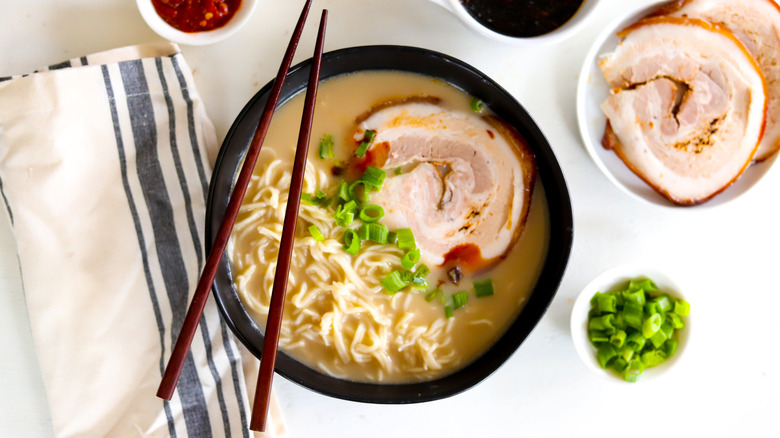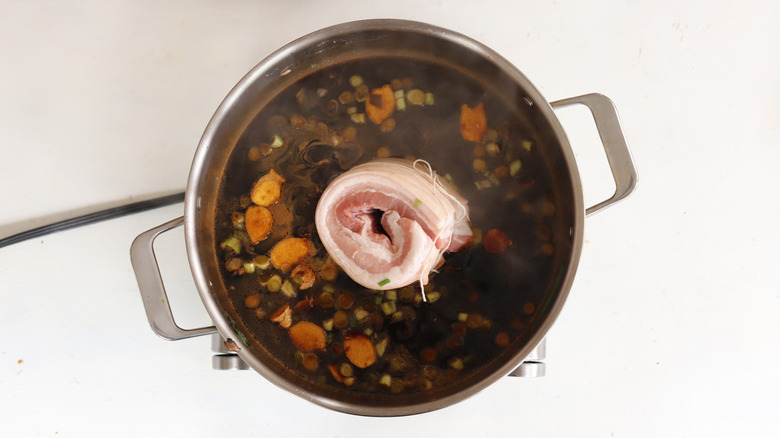The Best Cut Of Pork For Traditional Tonkotsu Ramen
We may receive a commission on purchases made from links.
Tonkotsu ramen is a Japanese noodle soup made from pork bones (specifically the pig's neck and trotters) that are cooked until the collagen breaks down into gelatin. After a few hours, you've got a simmering pot of opaque white broth laden with umami depth and silky smoothness. This lays a perfect base for the tender yet slightly chewy noodles to go over, kept company by various toppings such as vegetables, mushrooms, eggs, and most importantly: pork. We're not talking about just any random cut, either. There's no better pick for this dish than pork belly, especially when it's braised into chashu.
While the name might be a little unfamiliar, chashu is simply marinated braised pork. It's prepared by braising the pork belly low and slow in Japanese staple condiments such as soy sauce, mirin, and sake, as well as herbs and aromatics. This not only allows the fat to render and the meat to soften but also infuses every morsel with a savory-sweet taste. Each slice has this juicy, fall-apart tenderness that melts the flavors straight onto your taste buds.
In a bowl of tonkotsu ramen, where the base is deep yet light, chashu and its complex taste couldn't be more of a perfect fit. It offers a savory bite that enhances the dish's intensity, with sweet, aromatic nuances swirling beautifully in the aftertaste. Since the chashu isn't chewy or tough, it almost melts right into the velvety broth, seamlessly enhancing the richness without making the flavor profile feel heavy.
Must-know tips for successful chashu
With such flavor and textural intricacy, chashu requires time, patience, and proper technique. It starts at the very beginning since preparing the pork in advance is important with homemade tonkotsu. Rolling it into a log and securing it with butcher's twine is highly recommended. This shapes the meat slices into those perfect spirals you often see in restaurants and maintains the meat's juiciness. Before braising, consider briefly searing the meat. This extra step gives it a caramelized crust taking the savory depth to the next level.
Keep in mind that timing and temperature are some of the most crucial elements when it comes to braising the pork. While setting a high temperature shortens the cooking time, this is one of the biggest mistakes when braising pork belly as it inevitably dries out the meat. Cook it at too low a temperature, however, and it might take way too long. If you're using an oven, keep the temperature at 275 degrees Fahrenheit for over 3 hours. On the stove, over low heat, the simmering process should take around 2 hours.
When the time's up and the meat is taken off the heat, don't serve it right away. Let it rest for a few hours, or better yet overnight, in the braising liquid. Given more time to absorb the liquid, the flavors are way more intense and packed with great moisture that allows a much easier slice.
And once you've perfected the recipe, you may wish to invest in a set of ramen bowls, like this melamine set with chopsticks and stands or a ceramic set in which to enjoy your meal.

